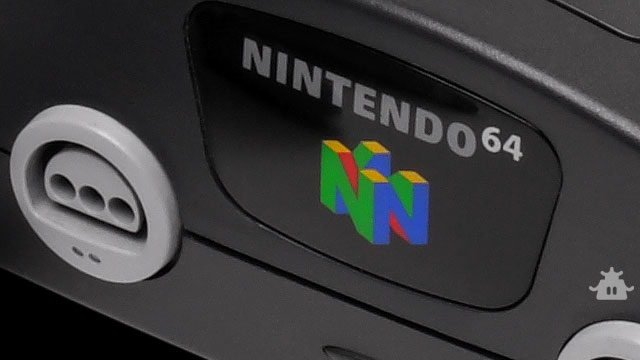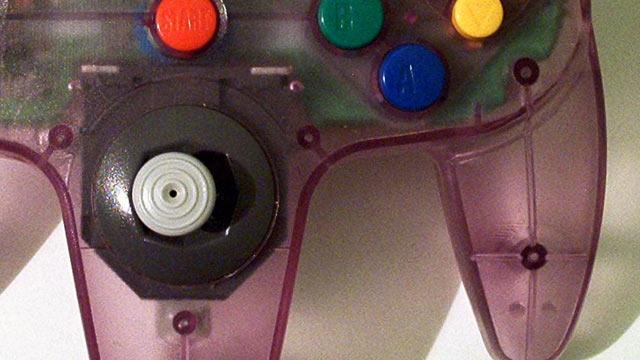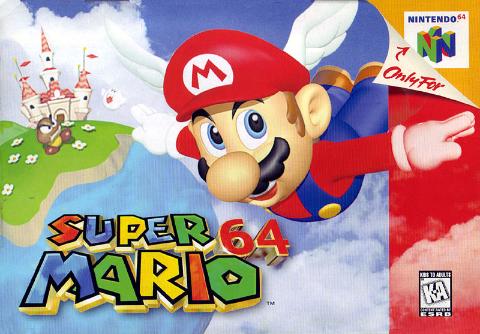
This article was originally published on October 14, 2014.
There’s no way this is a video game.
That was my immediate response to seeing Nintendo 64 and Super Mario 64 for the first time. Nintendo Power had been building up what was being called Ultra 64 for months, showing snippets of upcoming games that, frankly, didn’t seem real. NES and SNES software might seem primitive to today’s players, but before Nintendo 64, that was what games were, period. 2D was it, and though developers managed to squeak in pseudo-3D gameplay here and there with titles like Star Fox, it did little to prepare fans for the polygonal revolution.
It’s tough to ask someone to imagine a world without something that’s as commonplace and everyday as sliced bread. Removing a point of reference is much more difficult than trying to fabricate one. But for those who weren’t around when Nintendo 64 launched, picture a point in time where console controllers didn’t have analogue sticks. Where characters and environments in a game were rendered in pixels, and the closest developers could get to 3D was faking it with things like the isometric perspective found in Super Mario RPG. By the time the calendar rolled around to 1996, Nintendo was ready to turn all of that on its head.
Let’s take a step back to the aforementioned Star Fox. Longtime Nintendo wunderkind Shigeru Miyamoto had been greatly pleased with what was accomplished in the space shooter, most specifically the Super FX chip technology that powered it. Through the chip, his team had been able to wrangle the SNES into allowing them to do polygonal rendering in a way that they never had before. Miyamoto was inspired by the possibilities of being able to create a game world in 3D, with his mind turning to Super Mario as the next best candidate for the tech. Simple demos were made, experiments run, but ultimately it became clear that SNES wouldn’t be able to deliver on his vision.

The then-Ultra 64 was in the initial stages of being designed when the decision was made that Nintendo’s next console would be home to Miyamoto’s new Mario game. Boasting processing power many times more powerful than anything SNES was able to muster, Ultra 64 was more than capable of playing host to Miyamoto’s dream of a 3D game world, but there was a slight problem: what exactly did a 3D game world even look like? How was the player supposed to move a character around a 3D environment? Those and a million more questions began cropping up as Miyamoto and company started their work.
It’s this bevy of quandaries that would set the foundation for modern gaming as fans know it. As Miyamoto and his team kept working on what would become Super Mario 64, they continued to be challenged by problems that simply never existed on NES and SNES. The concept of something like the in-game camera, for instance, was an early hurdle. With 2D games, the TV screen is essentially the camera for players, and with the characters in a game only ever moving on a flat plane, it was a stationary one, at that. With Mario 64, however, Mario was basically moving into the screen, and that meant a stationary view wouldn’t work-Mario would just keep going forward until he was a pin prick in the distance.
It was an interesting dilemma, one which Miyamoto and his designers realized could be solved by having the camera trail behind Mario at all times. Tinkering with it resulted in Lakitu being chosen as the de facto “cameraman” of Mario 64, serving both a practical and creative purpose in the game. That’s just one example of many, of course, but what’s most important to take from the development of Mario 64 is that the team was rewriting the rules book with every step they took. There was no map, there was no guide; it was truly sink or swim. Even the infamous three-pronged controller for Nintendo 64 was crafted out of necessity as much as anything else; a d-pad alone wouldn’t suffice for the precision control needed to move Mario on a dime in 3D. Now, it’s almost unfathomable to imagine a gaming controller without an analog stick!

Once their hard work was complete, and a quick name change later, Nintendo 64 and Mario 64 landed in players’ hands, and it was unlike anything they’d ever seen or played. Kiosks in stores like Toys R Us and Target drew curious onlookers, marveling at the wonders of an interactive world in a TV screen. My uncle and his roommate had a Nintendo 64 in their home, and my sister and I sat transfixed playing Mario 64 on it for the first time. It was a total learning experience, rewiring our brains (well, mine more than hers, she was pretty young!) to play in a way that wasn’t familiar. Pushing up on the analogue stick meant forward, tilting it lightly would make Mario tiptoe, full tilt would send him running, and so on. What the two of us were experiencing in my uncle’s living room was being shared by gamers new and old the world over. What Nintendo had done for 2D with Super Mario Bros., it had done again with Mario 64-and that was to change everything.
Overnight, Nintendo had altered the landscape of the video game industry. Much to the detriment of 2D gaming, 3D became the standard for developers everywhere. 2D was archaic, it was simple, it was so yesterday, to be delegated to handhelds for over two generations of consoles. Mario 64 became the blueprint from which everything else was built, with developers finding ways of refining and improving upon Nintendo’s own attempts to perfect 3D game making. Nintendo 64 represented a seismic shift that really hasn’t been seen in the years since. The rise of online and mobile gaming is close, but the true next frontier of gaming, genuine virtual reality, will probably be the only thing that rivals the impact of Nintendo 64 hitting the marketplace.
That might sound like hyperbole, but there’s really no way of overemphasizing what Nintendo 64 means to the history of the industry. If NES saved video games, Nintendo 64 prepared them for the future. The games might not be as visually impressive today as they were (deep breath, this makes me feel old) almost twenty years ago, but what players know and love about everything from Assassin’s Creed to Call of Duty has its roots in Nintendo 64. The industry and fans alike owe the system a great deal of respect, as it defined 3D gaming and continues to have its legacy felt in numerous different ways. From 64 bits sprang an infinite number of new ways to play.




 ShareThis
ShareThis





